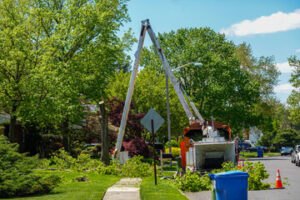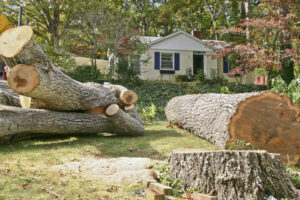Pests are undesirable organisms that damage or devalue crops, food stores, lawns, gardens, structures, and human property. They can also negatively affect terrestrial and aquatic ecosystems.

Eliminate sources of attraction by keeping food in containers and cleaning crumbs off floors, and regularly inspecting doors and windows for cracks that could serve as entry points. Use preventive nonchemical methods before resorting to pesticides. Contact Olathe Pest Control for professional help.
The best way to deal with pest problems is to prevent them from occurring in the first place. This involves identifying and eliminating the food, water, shelter, and other conditions that attract pests. It also includes regularly inspecting and maintaining properties to identify potential problems and take steps to correct them before they become infestations. Prevention can involve a variety of practices and techniques, including preventing entry by sealing cracks, removing piles of wood or debris that might serve as nesting areas for termites, ants, and beetles, and cleaning and sanitizing buildings on a regular basis to eliminate food sources and moisture accumulations.
Pest control professionals should be able to provide advice and assistance in developing preventive strategies that are appropriate for a particular situation. Integrated pest management (IPM) approaches can often be more effective than traditional pesticides, and they can also help protect human health, animal welfare, and the environment. In some cases, IPM might include the use of pesticides in conjunction with other non-chemical methods, such as setting traps and adjusting habitat conditions.
Many pests enter homes and offices looking for food, water, and shelter. The presence of these factors can attract them and make them more likely to infest a building. Some of the most common pests are cockroaches, ants, beetles, and termites. These pests are attracted to materials that they can eat, such as food and garbage, and they also like to live in warm and moist environments.
The most effective ways to prevent pests invading buildings are to remove their food and water sources, seal cracks, eliminate standing water, and practice IPM. These methods can be applied to both residential and commercial properties, and they can be effective in dealing with a wide range of pests.
The most important step in pest prevention is to clean and sanitize houses on a regular basis. This involves sweeping and vacuuming to remove crumbs and food particles, and wiping down surfaces. It also means keeping garbage bins and trash containers sealed, storing foods in the refrigerator, and disposing of waste properly. Other preventive measures can include fixing leaky pipes, repairing cracked walls and roofs, and installing sweeps and astragals to fill gaps under and between doors. It is also important to keep trees and bushes trimmed and away from structures, and to store wood elevated and at a distance from the house.
Suppression
Pests are undesirable organisms that damage or interfere with crop production, damage homes and other structures, or transmit disease. Organisms that are weeds, insects (or vertebrates or other invertebrates), bacteria, viruses, fungi, or plant pathogens may be considered pests.
Prevention is the most effective method to control pest problems. It involves actions that greatly reduce the probability of a pest infestation occurring or slowing the population growth rate of an existing infestation. This includes modifying growing conditions, frequently cleaning areas where pests might occur, sealing cracks and crevices, keeping food in properly sealed containers, and more.
Insects and other pests often move into a crop or area from other locations outside of the field or garden. These areas are called secondary infestations. The use of preventative measures will help limit these infestations from occurring, but they are not always successful. In such cases, suppression of pests can be effective at controlling a problem when an infestation occurs.
Suppression methods include physical or chemical control. The choice and timing of a suppressive tactic is based on the biology of the pest, the location and severity of an infestation, tolerance for injury, economics, environmental impacts, and more.
Chemical controls include a variety of products. Many of these products are derived from natural sources. Others are synthetic. The most common are insecticides that target specific pests. They can be absorbed through the skin or air, and they work on the nervous system to kill the pests. Other types of chemical control agents are repellents, fungicides, and pheromones. Pheromones are natural insect scents that elicit a response from an animal or plant, but in very low concentrations. For example, a female bug’s sex pheromones can be used to confuse males and prevent mating.
When using any type of pest control, it is important to follow product labels and practice personal safety. This includes wearing long pants and sleeves, closed-toe shoes, face and eye protection, and a mask when spraying. It is also important to monitor the success or failure of any corrective action taken. This will help determine if additional or different suppression tactics are needed, and it will assist in informing future prevention and avoidance activities.
Eradication
Pests are a constant threat to public health. They can cause destruction to wood or fabrics, infest food items, and transmit disease through their bites or droppings. Public health officials attribute our current clean quality of living to three things: top-notch vaccines and medications, vastly improved sanitation, and high-quality pest control.
Pest control methods include both physical and chemical controls. Before applying any pesticides, it’s important to consider the tolerance level of the pests and the environment. Once the threshold is determined, an IPM plan can be created to keep pest populations below that level.
Insecticides are the most common pest control products. They kill the pests by interacting with their nervous systems, but can also affect other organisms and the environment. Many insecticides are effective, but pests often develop resistance to them. Pesticides can be used indoors or outdoors, but the choice of where and when they are applied is critical to their effectiveness.
Many people prefer non-chemical pest control methods because they’re less harmful to the environment and human health. Some of these techniques include:
Sealing areas where pests enter structures (weatherization). Maintaining clean dining and food storage areas. Using alternative pest control measures to prevent problems, such as installing bird feeders, composting, and keeping lawns well-watered and mowed.
Some pests invade homes and buildings through tiny cracks or holes, making pest prevention even more important. Several types of products can be used to close these small openings, including weatherstripping, door sweeps, and caulk. In addition, the gaps around pipes and electrical lines should be sealed.
If you choose to use pesticides, be sure to read the label carefully and follow the application instructions completely. Some pesticides may be toxic if not used properly, and some are restricted in environmental settings or for certain crops. It’s best to leave pesticide application to professional pest control experts who are trained to apply them safely and effectively. They should know the proper equipment, personal protective equipment, and environmental conditions for applying pesticides, as well as how to safely store, dispose of, and clean up any unused product.
Monitoring
Pest monitoring is an integral part of a pest control program and involves checking on pest populations to determine whether or not they are at or approaching action thresholds. The goal is to identify and act quickly to prevent or minimize damage from a pest outbreak. Monitoring can also include tracking environmental conditions, such as weather and food or harborage availability, to help anticipate future pest problems. In addition, the ability to recognize the impact of natural enemies can be important in deciding when pesticides are necessary.
For example, a homeowner can monitor the activity of carpet beetles, silverfish, and box elder bugs by looking for evidence of these insects around entryways, in closets, or near electrical outlets. The homeowner can then follow up on these observations with a pest professional, who can offer suggestions for how to eliminate the pests’ preferred habitat and other factors that contribute to their attraction. In commercial settings, pest monitoring may involve establishing a log to track pest sightings and their frequency. This information can be used to identify hotspots and strategically place traps and monitoring devices.
In many situations, prevention is the primary goal of a pest management program. This is especially true for outdoor pests, such as rodents and termites, where eradication is more difficult. In closed environments, however, such as health care, food processing and manufacturing facilities, and retail establishments, eradication may be the ultimate goal.
Getting the most out of your pest prevention efforts requires careful planning and commitment. Some pests are attracted to specific substances or activities, so changing these factors can dramatically reduce the need for pest treatments. Examples of these types of modifications might include establishing a protocol for inspecting incoming shipments to a facility or relocating dumpsters away from entrances to a building. It could also mean establishing a routine cleaning schedule to help reduce moisture attracting pests in locker rooms or operating rooms in health care facilities.
Monitoring for pests in the field often includes observing turf conditions, noting which pests are present and when they cause damage. It is also critical to identify the injury and treatment threshold levels for key pests, so that appropriate actions can be taken when the levels are reached. In addition, monitoring can help determine the effectiveness of non-chemical control methods.

